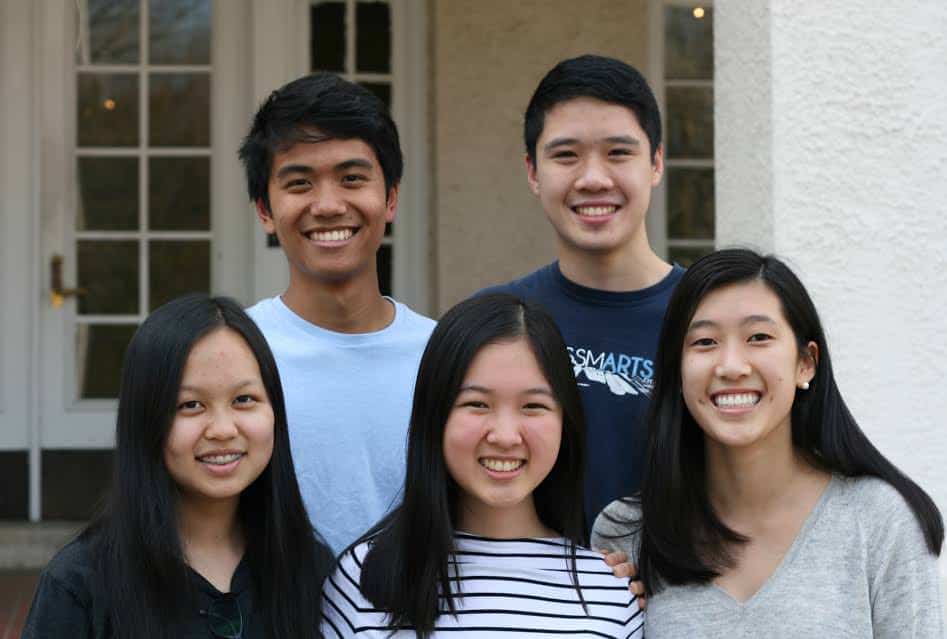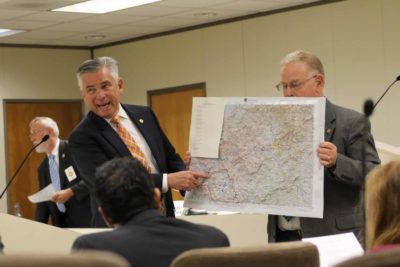

A North Carolina School of Science and Math (NCSSM) team of five students is heading to the final round of a prestigious national math competition later this month.
Dory Li, Angela Deng, Evan Jiang, Miguel de los Reyes, and Lucy Wu will compete against five other teams in Moody’s Mega Math (M3) Challenge in New York City on April 24. The challenge requires participants to use math and problem-solving skills in a real life application.
Dory Li, who traveled with EducationNC’s Mebane Rash and other STEM students to China in March, said making it to the finals in the M3 Challenge has shown her how math can be used to solve real-life issues.
“Moody’s has provided our team with an incredible opportunity to apply theoretical mathematics to a real-world situation,” Li said. “We each contributed different key strengths and learned the importance of working together to solve problems. This experience has further inspired us to pursue mathematical analysis and to collaborate on global issues in college and beyond.”
The team’s journey began in February when it was one of the 1,100 groups of students given 14 hours to create plans using mathematical modeling for the U.S. National Park Service (NPS). The challenge asked students to protect its 417 national sites despite looming changes. The NPS said factors like climate change will likely impact its resources and visitor experience in the future. Student participants were invited to envision a path for growth and sustainability.
“The National Park Service is privileged to work with the high school mathematicians in Moody’s Mega Math Challenge,” said Rebecca Beavers, coastal geology and adaptation coordinator at NPS. “These bright young minds hold the keys to innovative solutions for many environmental concerns, including climate change.”
The final round will take the form of a 15-minute presentation with questions from the judges.
The winning team will receive $20,000, with another $150,000 in scholarship prizes being rewarded to individual participants. The other finalist teams are from high schools in Alpharetta, Georgia; Lincolnshire, Illinois; Lincroft, New Jersey; Silver Spring, Maryland; and Westford, Massachusetts.
Li said her favorite part of the process was seeing how each team member could use his or her strengths to help create the best possible outcomes.
“I always enjoy seeing everyone be able to use their unique skills,” Li said. She said skills from communication and writing to computer science and data analysis were necessary to create a plan, build the model, run simulations, and write a 20-page report with findings and recommendations.
“Some people would call math modeling a team sport because you need so many types of talents on the team,” she said.
Dan Teague, a math teacher at NCSSM who prepared the team for its challenge, said this kind of opportunity can transform students’ ideas of what all is possible when it comes to math.
“Mathematical modeling can change students’ perception of what it means to ‘do mathematics’ as it focuses on thinking mathematically more than on remembering mathematics techniques,” Teague said. “In most math classes, questions are strictly mathematical in nature, whereas with mathematical modeling, students must combine their knowledge in all of their subjects to think strategically and come up with solution sin a real-world context.”
Teague said the challenge has helped students see connections between subjects and combine their skills in multiple areas.
“The Moody’s Math Challenge pulls together the whole school day in one activity and requires the students to use mathematical principles along with computer coding, research and writing,” he said. “As a consequence, math naturally becomes a part of the students’ everyday approach to life’s challenges.”
The competition is sponsored by The Moody’s Foundation and organized by Philadelphia’s Society for Industrial and Applied Mathematics. It is designed to encourage students to pursue higher education and careers in math and science. Arlene Isaacs-Lowe, president of the organization, said the goal has become a reality for many M3 challenge finalists and champions.
“We are at a critical moment in history where there is a very real international need for our youth to pursue careers in STEM-related fields so we can sufficiently fill an increased number of jobs coming down the pike in this field,” Isaacs-Lowe said. “M3 Challenge increases that interest in the US in a fun, unique, and exciting way.”


